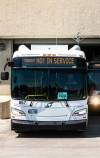Funding Transit a necessity
Advertisement
Read this article for free:
or
Already have an account? Log in here »
To continue reading, please subscribe:
Monthly Digital Subscription
$0 for the first 4 weeks*
- Enjoy unlimited reading on winnipegfreepress.com
- Read the E-Edition, our digital replica newspaper
- Access News Break, our award-winning app
- Play interactive puzzles
*No charge for 4 weeks then price increases to the regular rate of $19.95 plus GST every four weeks. Offer available to new and qualified returning subscribers only. Cancel any time.
Monthly Digital Subscription
$4.99/week*
- Enjoy unlimited reading on winnipegfreepress.com
- Read the E-Edition, our digital replica newspaper
- Access News Break, our award-winning app
- Play interactive puzzles
*Billed as $19.95 plus GST every four weeks. Cancel any time.
To continue reading, please subscribe:
Add Free Press access to your Brandon Sun subscription for only an additional
$1 for the first 4 weeks*
*Your next subscription payment will increase by $1.00 and you will be charged $16.99 plus GST for four weeks. After four weeks, your payment will increase to $23.99 plus GST every four weeks.
Read unlimited articles for free today:
or
Already have an account? Log in here »
While the new Winnipeg Transit network launched in June 2025 has achieved many of its objectives, it’s important to assess what is and isn’t working in order to see Winnipeg Transit reach its full potential.
Overall, the system change gives transit a chance to increase ridership while ensuring Winnipeggers have frequent, reliable access to destinations across the city. This redesign isn’t a final product, but a new frame to give city council many options to improve service across the city, should they choose to turn up the dial.
Previously, our “spaghetti route” system had numerous congestion points — such as Graham Avenue — where buses stacked up.
Adding more buses to a system like this is meaningless as buses inevitably get stuck behind each other. The spaghetti routes also created confusion, especially to those new to the city or trying to reach an area they don’t know well. Telling someone to “hop on the 16” but not that 16, lest they end up in a completely different neighbourhood, didn’t inspire confidence.
The new system has given 75 per cent of Winnipeggers access to a primary transit stop (up from 40 per cent previously).
Some of us have lost our old stops, and that can be hard to get used to. We can work with our councillors and transit on which stops should be restored, but we do need to remember that more stops add more time.
When Transit asked during public engagement (Phase 1) “would you prefer a longer walk to a stop with more frequent service, or a shorter walk to a stop with less frequent service,” of the thousands of Winnipeggers who participated (75 per cent of them heavy transit users), 83 per cent said they preferred a longer walk to more frequent service.
What the current system has not delivered on is level of service.
Too many routes end too early, feeder routes are not frequent enough (the transfer times add too much time to the overall trip), and the frequent routes are too in-demand, meaning packed buses and pass-ups. New stops mean we need new shelters, and packed buses mean we need to up our cleaning game.
The good news is that level of service frustrations can be easily fixed.
The bad news is that it requires an increase to the operating budget to do it. This is where the system is struggling.
When city council approved the network redesign, one thing was made abundantly clear to Winnipeg Transit: they did not have any increased operating funding to work with. This is where we’re at today.
As someone who regularly rides the bus, I’ve had the pleasure of taking this new system to a number of new places at various points in the day.
For the most part, it’s worked well for me and I’m grateful for that. But I can see where we can make improvements. I’ve been squished onto a Blue four minutes after an equally full Blue has passed by.
I’ve been waiting for the F8 at a stop on Donald watching the bus creep behind single occupancy vehicles (requiring multiple light cycles to go a few blocks — madness!).
And I’ve heard from several friends who are frustrated with the feeder routes in their neighbourhoods being too infrequent, adding too much time to their trips. All of these frustrations are fixable, but they require resources.
It doesn’t matter what a city says it wants to be, a city’s vision is shown in what it chooses to budget for.
No new operating funding for transit while continuing to budget hundreds of millions of dollars to expand Kenaston (to save, at best, 12 seconds of travel time in one area of the city) and road budgets with ongoing “record levels” of investment, makes it clear to transit riders: your comfort and convenience is not as important as those who drive.
Transit is crucial for our cities as they continue to grow. It costs cities seven to nine times more per trip to move a person in a personal vehicle versus on a bus.
To not invest in transit is wildly irresponsible.
Winnipeg city council, the province of Manitoba, and our “nation building” federal government all need to come to the table to support public transit in our cities. Our system redesign has laid the foundation, we now need the resources to build on that foundation and deliver the transit system we need and deserve.
Mel Marginet is part of the sustainable transportation team at Green Action Centre and she’s the publisher at Great Plains Press, which publishes The City Project.














